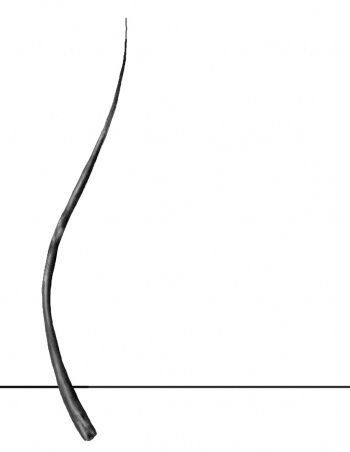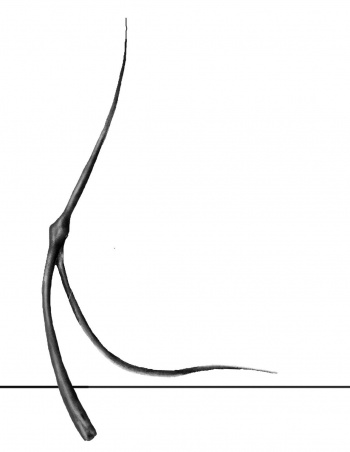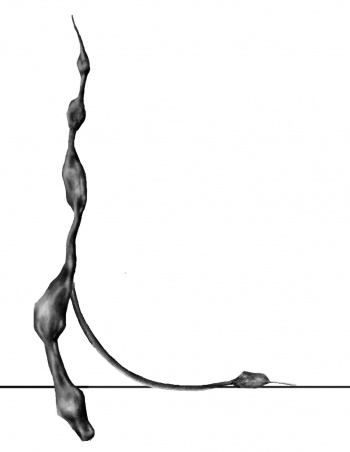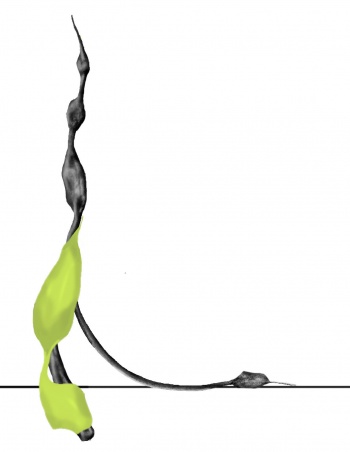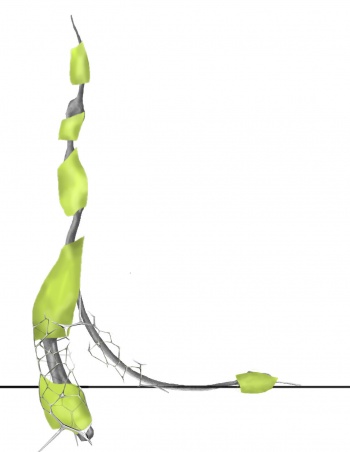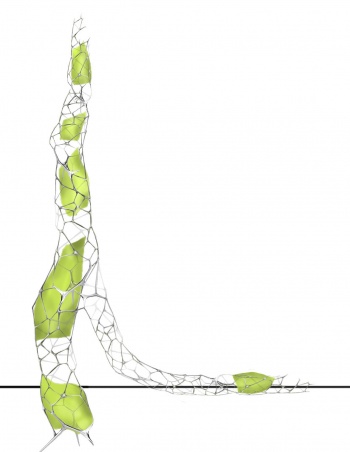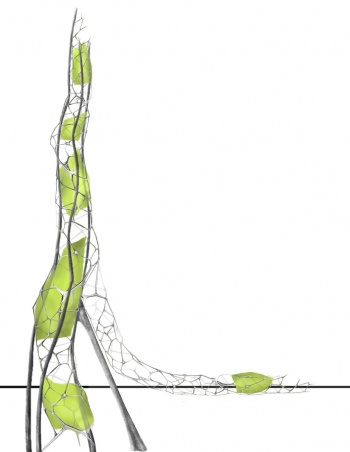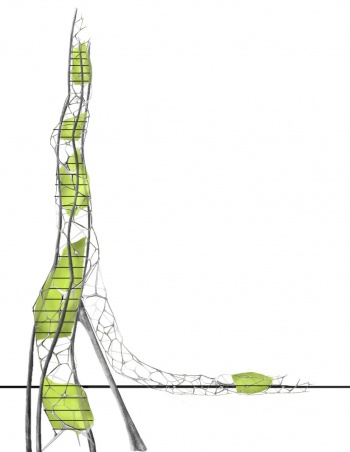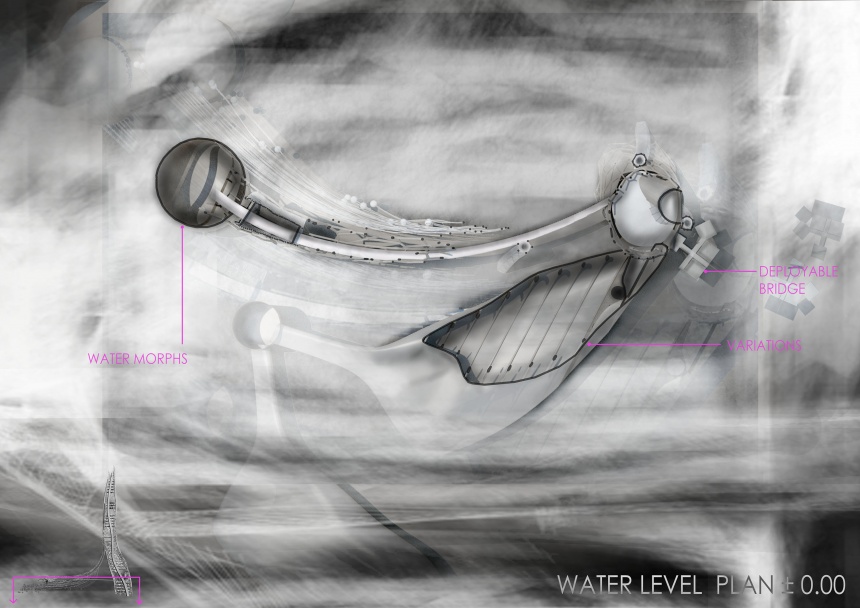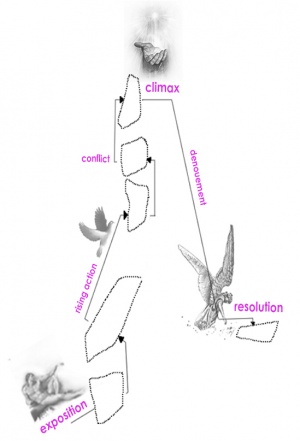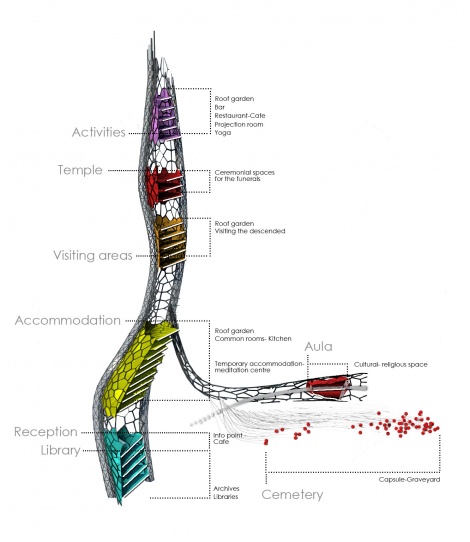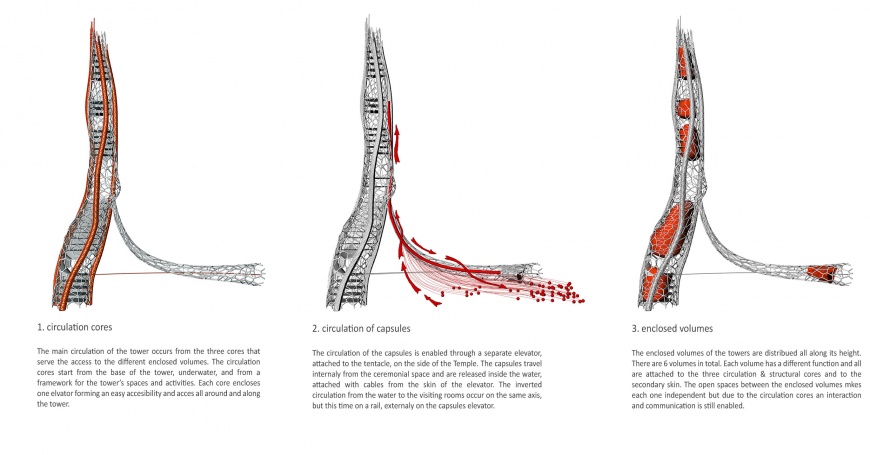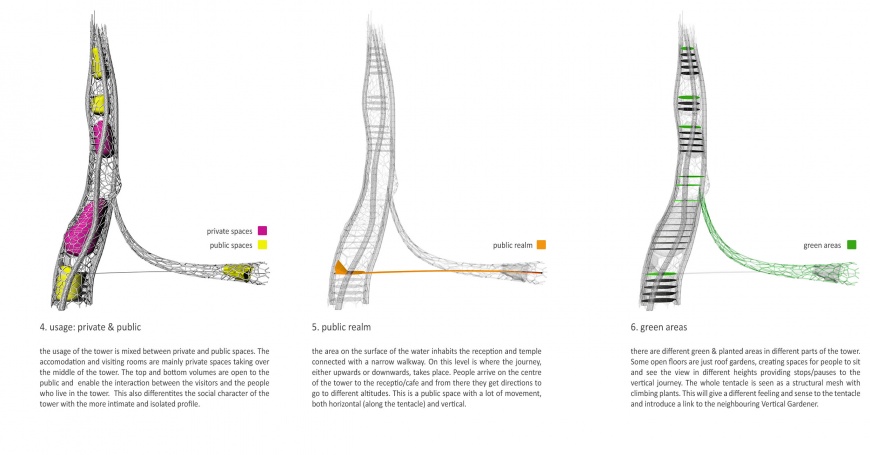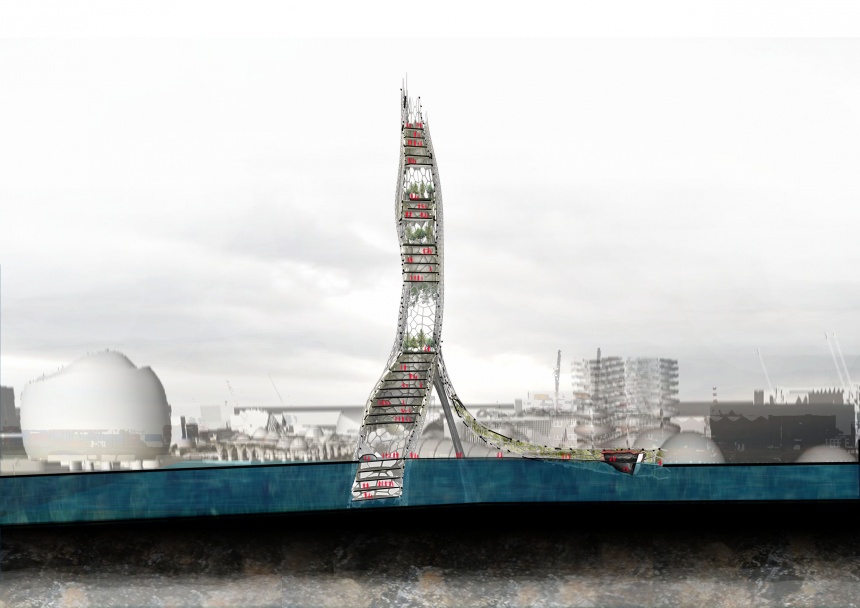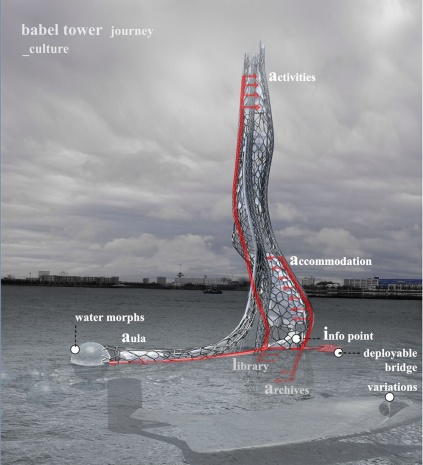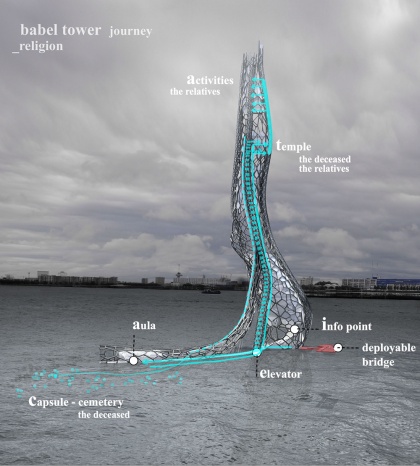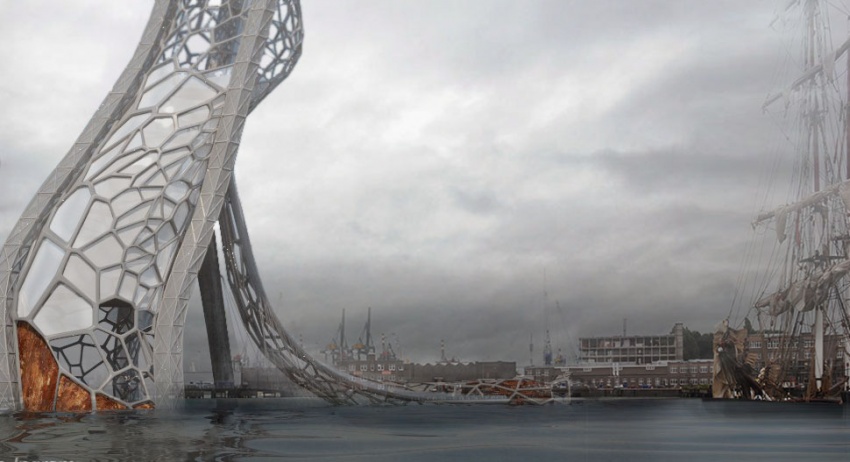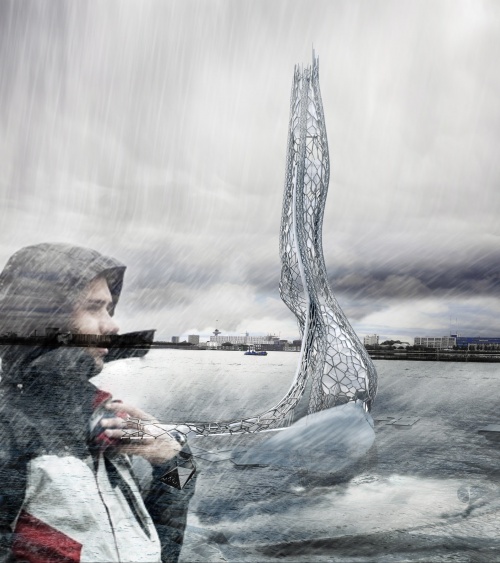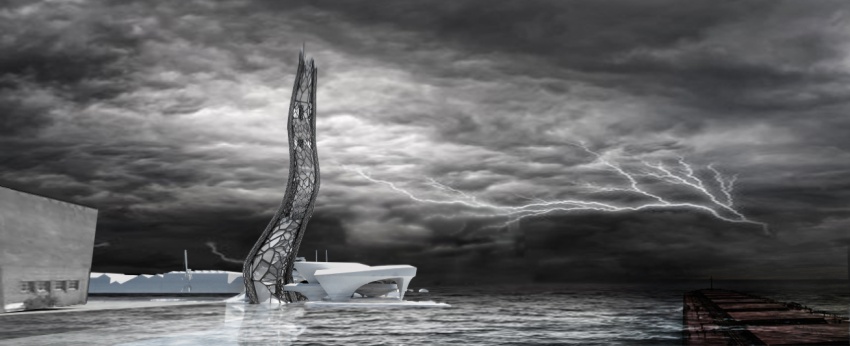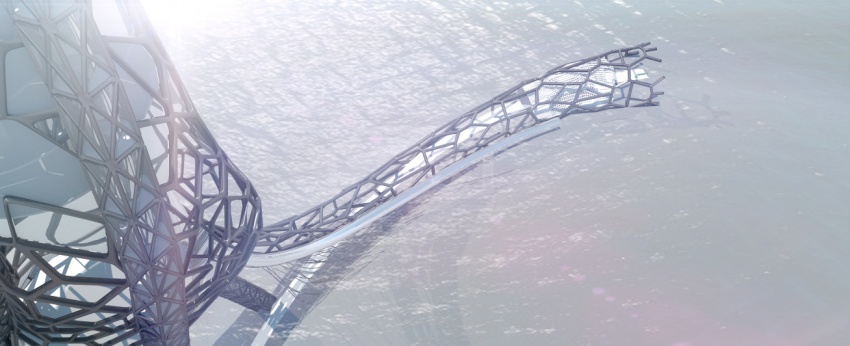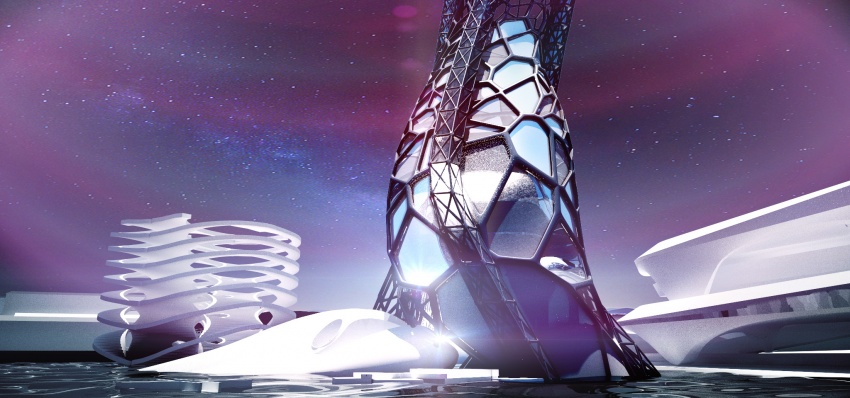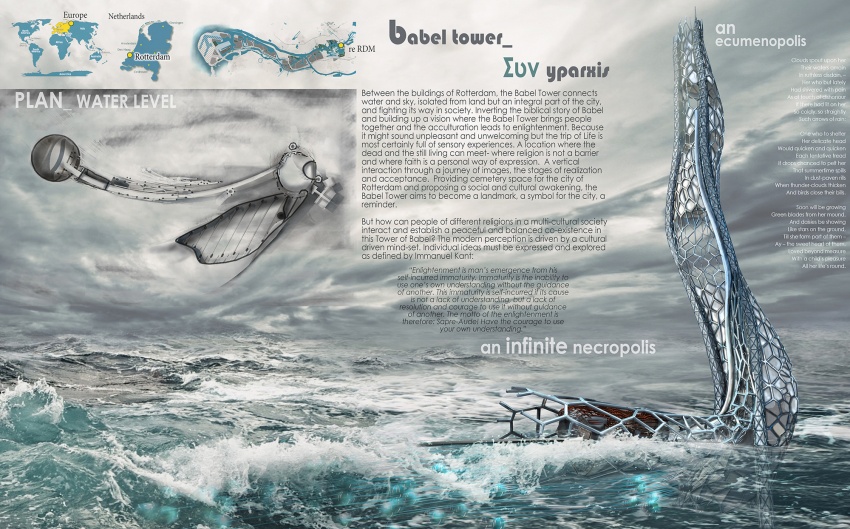project02:Styling
Styling
THE FORM
From the beginning of the design process we had a very clear concept and aim for the project. The best way to represent and convey the message was by experimenting with hight. Our aim is not only to form a typology but also create a landmark, or symbol. But again trying to do it in a subtle way architecturally. Use our tools to serve our purpose and make every element do more than one thing and all contribute to the overall imagery. An idea that we found closely related to our concept was the DNA and how it transforms to RNA and then becomes protein. This represents life but in a more scientific and biological mean. Thus we thought it would be really exciting architecturally to also present a different approach to the taboo of death. A contrast between the decomposition and the creation of life and matter.
In our struggle to celebrate differentiality and cultural diversity we conceptually divided our project in 2 parts: the infinite necropolis ((Greek plural: necropoleis; Latin plural: necropolis: large cemetery or burial ground, usually including structural tombs) and the ecumenopolis *(from Greek: οικουμένη, meaning world, and πόλις (polis) meaning city, thus a city made of the whole world). We would like to present our project on the journey inside and through the building.
THE PLAN
In our struggle to celebrate differentiality and cultural diversity we conceptually divided our project in 2 parts: the infinite necropolis ((Greek plural: necropoleis; Latin plural: necropolis: large cemetery or burial ground, usually including structural tombs) and the ecumenopolis *(from Greek: οικουμένη, meaning world, and πόλις (polis) meaning city, thus a city made of the whole world). We would like to present our project on the journey inside and through the building since our focus is a lot on the experience. However we do not have enough time to go in depth but all the information can be found on the wiki page. There are three main scenarios that define the building.
First, the visitors who are here for a ceremony and ‘burial’. The deceased is taken high to the ceremonial space to get prepared in the capsule while the family visits the Aula. The walkway from the reception point to the Aula is connected by a narrow walkway where the cables connected to the capsules can be seen emerging from the water. The family then also goes to the ceremony space where the final goodbye takes place and the capsule is released through a specified elevator into the sea and the family continues the journey up to the Activities area: he meditation and yoga space, group therapy, cinema and restaurant. Secondly, we have the people who are here to visit their beloved ones. Going to the level of the visiting rooms, the capsule is summoned and ascends through a railing system to the position of the visiting room. Finally the 3rd scenario is related to the cultural aspect of the project. The visitor can go underwater to the archives and library, visit the Aula, a space of contemplation and acculturation, of might be living or renting a room in the tower or just be visiting for the promenade.
USAGE
ANALYSIS
THE PROCESS
The building is called Babel because we were inspired by the story and wanted to represent the inverted Babel story. Although the space we are proposing will have some religious functions we do not consider it as a religious space. It is a place that everyone can feel represented and calm, serene, free. People arrive at sea level on a piece of land that is formed. The family with the deceased goes on a higher level (+170) where the ceremony takes place and the body (or ashes) are positioned inside the big capsules. There is a separation of the soul from the body and the family and friends say the last goodbye. The capsule travels through vacuum elevators towards the deepest point of the tower where it is released in the water, a purifying and alive element. The underwater levels is the archive of the dead and communicates with the underwater world. The deepest core, source of information and a journey that one can take, which is a strange experience. The visitors who come to see their deceased family members, instead of them going down, the building has a system that can trace the capsule which has a unique number and code and transfer it above sea level, in the specifies areas where the living and the dead are reunited. After the ceremony, the family continues its journey towards the top of the tower, where this process is the realisation time, and acceptance space. The views, light and architecture becomes inspiring and elevating giving a new meaning to life and death. The tower has scattered spaces of accommodation for people who want to stay there for a longer period of time, either to think and meditate, or to an extended visit to their lost beloved ones, or find the strength, belief and balance they need to tackle their everyday problems.
PROGRAM & CIRCULATION
The main elements that will compose the design is the core circulation formed by several elevators travelling along the tower, the clusters/capsules that we propose as a burial method, the skin that flows around the tower and forms the interior spaces by forming concave and convex spaces. So, the inhabited spaces will be arranged long the tower and the visitor will be travelling through spaces, others open and exposed and others internal and more intimate. Thus, the square meters will be scattered along different floors and levels. The circulation is organized in such a way that the alive and the deceased will 'interact' in several ways and occasions. Their journeys will begin together and then separates options and routes can be followed. The main temple or aula will be situated on sea level, rising from the water, which will be a flexible but sacred space.
STYLING
“Enlightenment is man’s emergence from his self-incurred immaturity. Immaturity is the inability to use one’s own understanding without the guidance of another. This immaturity is self-incurred if its cause is not a lack of understanding, but a lack of resolution and courage to use it without guidance of another. The motto of the enlightenment is therefore: Sapre-Aude! Have the courage to use your own understanding.”
The metamorphosis of the journey, through fire, water, ground and air, returning to the compositional elements of the human substance. These four roots, or rhizomata as defined by philosopher Empedocles, are embodied in the construction of the esoteric context of the human formation.
A vertical interaction through a journey of images, the stages of realization and acceptance. Providing cemetery space for the city of Rotterdam and proposing a social and cultural awakening, the Babel Tower aims to become a landmark, a symbol for the city, a reminder.
Our aspiration was to form a social commentary and question how can people of different religions in a multi-cultural society interact and establish a peaceful and balanced co-existence in this Tower of Babel?
